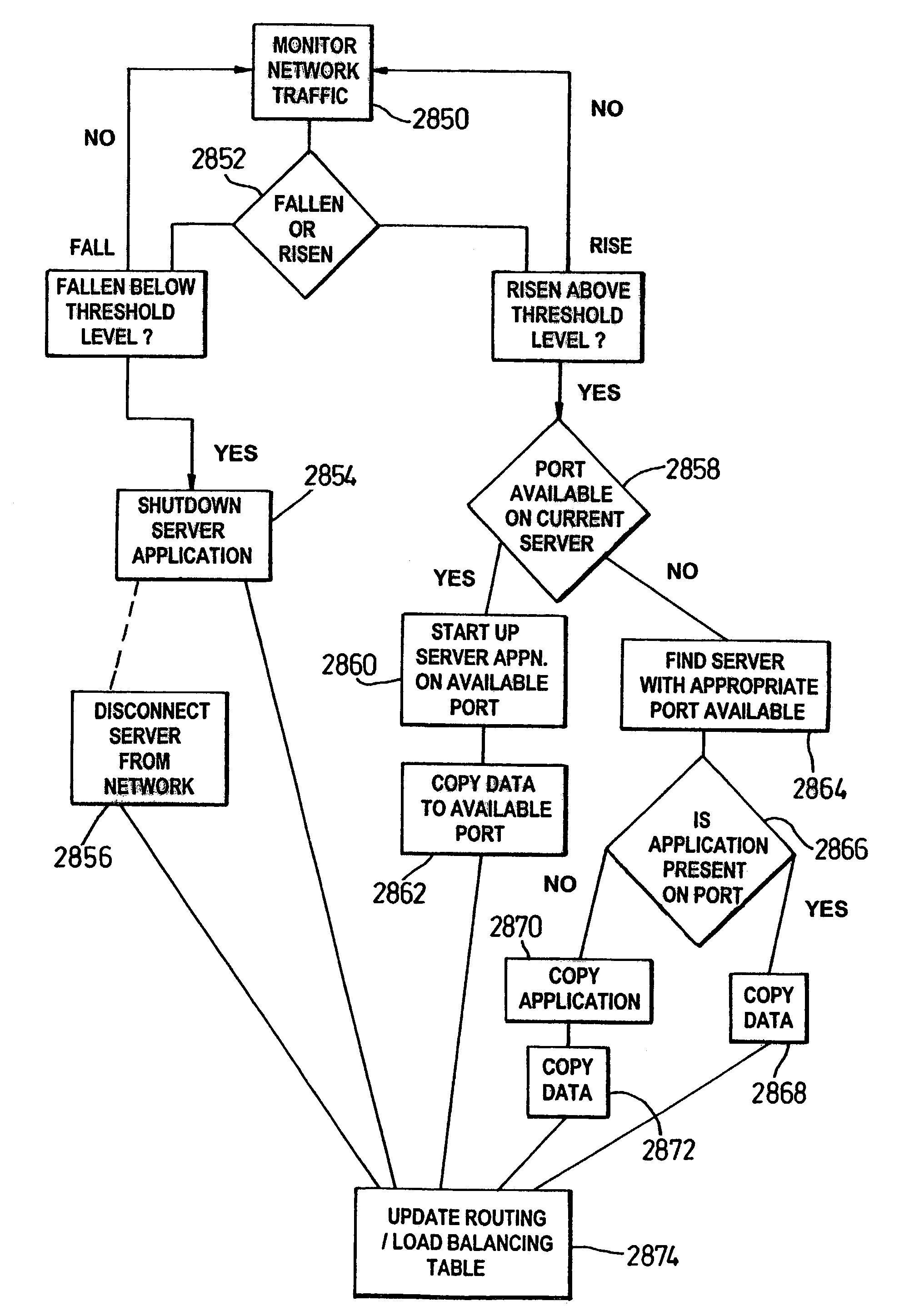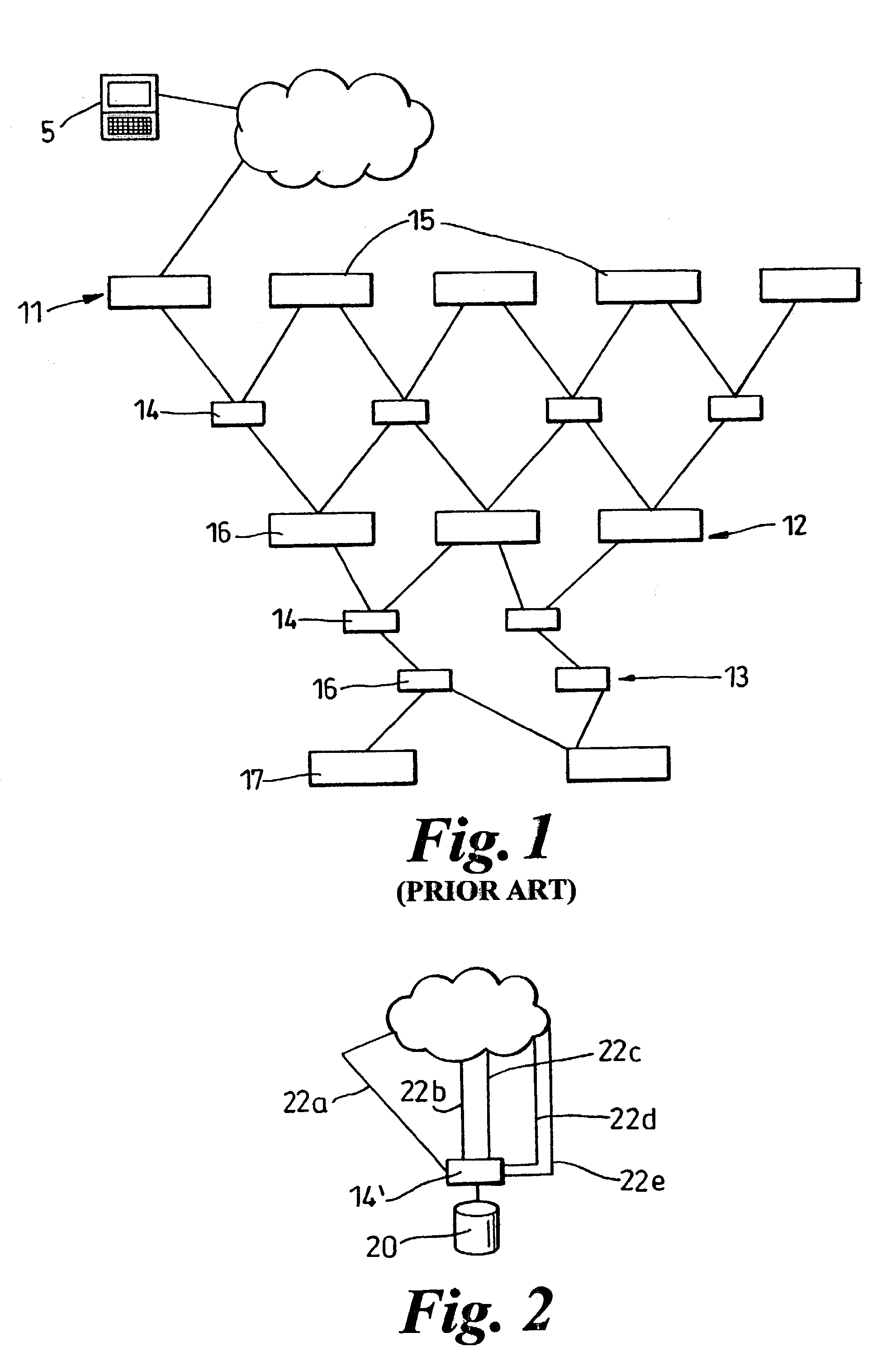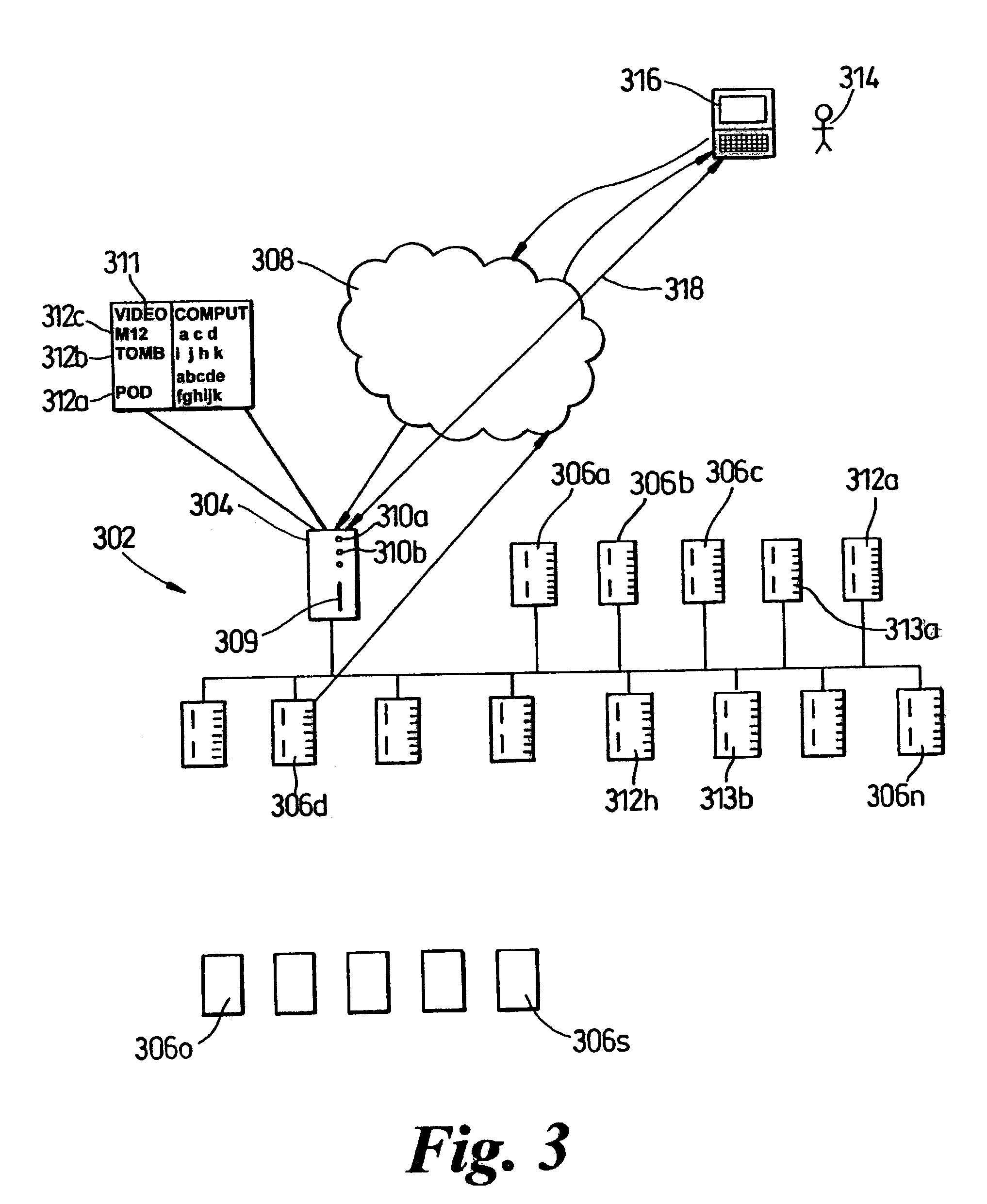Systems and methods of maintaining availability of requested network resources
a network resource and request technology, applied in the field of maintaining availability of requested network resources, can solve the problems of large amount of often redundant storage, large amount of disc space used, and many data content and applications may not be served, so as to increase the capacity of said video server, and increase the capacity of video serving applications
- Summary
- Abstract
- Description
- Claims
- Application Information
AI Technical Summary
Benefits of technology
Problems solved by technology
Method used
Image
Examples
example 2
[0442]exec (‘bandwidth vf2’) {[0443][0444]>2048 k: ‘mover vf2’[0445]} every 10 seconds[0446]}
[0447]The wrapper whole database ( . . . ) { } specifies a database to run queries against, within that, queries are of the ‘exec’ or ‘query’ form. The fist example here specifies that is a title that is currently showing has more than three inactive connections, it should reduce that serving capacity for that title by calling an external process called ‘cool’ with an argument specifying which title to cool. Conversely, if there are less than three inactive connections for a given title, then more serving processes for that title should be started up, by calling an external process called ‘heat’ with an argument specifying which title needs more serving capacity from the farm. In both cases, cool and heat then run queries against serving capacity of the farm and make judgements based on appropriate serving loads on resource servers to determine where those new serving processes are started u...
PUM
 Login to View More
Login to View More Abstract
Description
Claims
Application Information
 Login to View More
Login to View More - R&D
- Intellectual Property
- Life Sciences
- Materials
- Tech Scout
- Unparalleled Data Quality
- Higher Quality Content
- 60% Fewer Hallucinations
Browse by: Latest US Patents, China's latest patents, Technical Efficacy Thesaurus, Application Domain, Technology Topic, Popular Technical Reports.
© 2025 PatSnap. All rights reserved.Legal|Privacy policy|Modern Slavery Act Transparency Statement|Sitemap|About US| Contact US: help@patsnap.com



